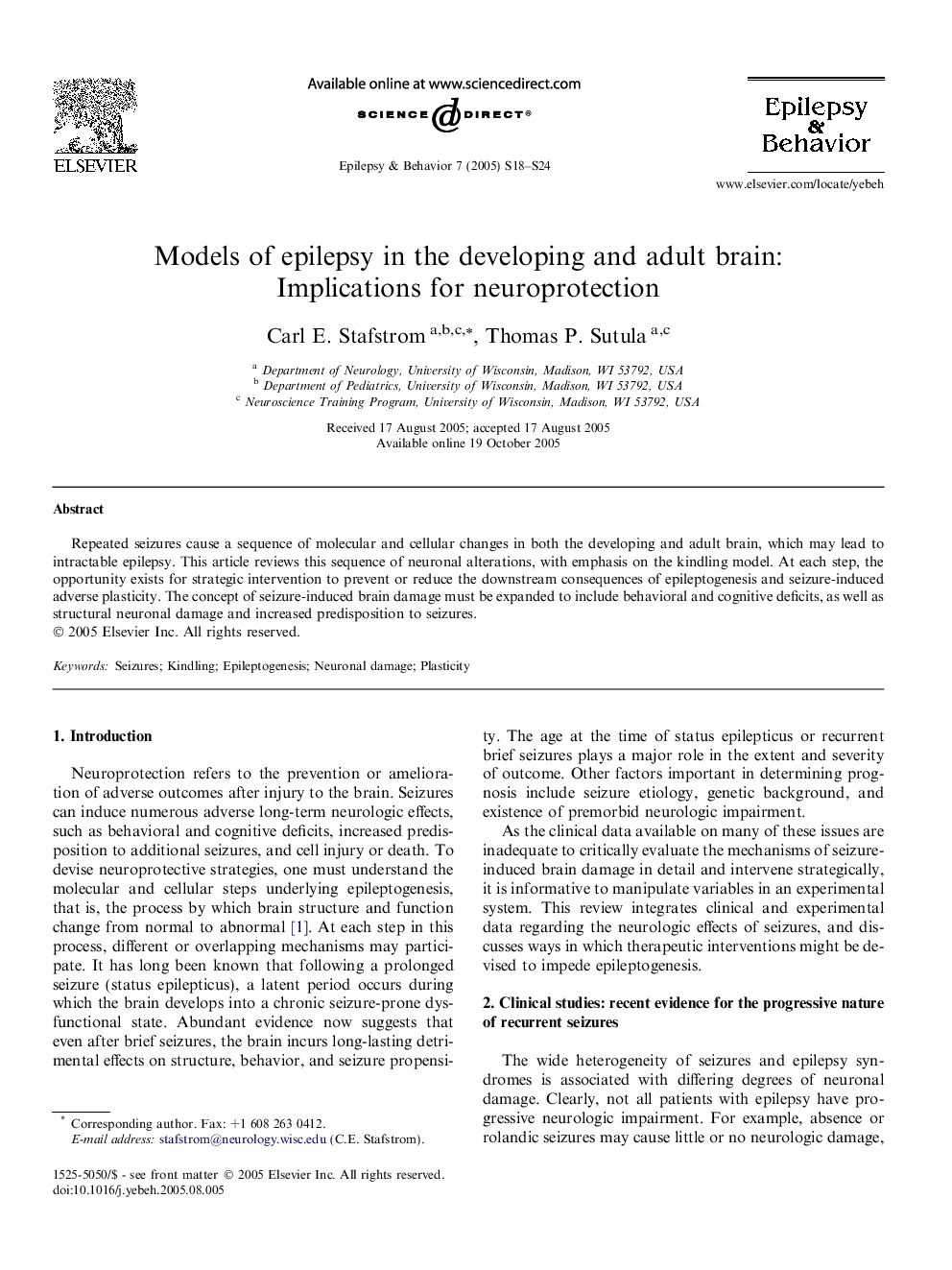| Article ID | Journal | Published Year | Pages | File Type |
|---|---|---|---|---|
| 9190200 | Epilepsy & Behavior | 2005 | 7 Pages |
Abstract
Repeated seizures cause a sequence of molecular and cellular changes in both the developing and adult brain, which may lead to intractable epilepsy. This article reviews this sequence of neuronal alterations, with emphasis on the kindling model. At each step, the opportunity exists for strategic intervention to prevent or reduce the downstream consequences of epileptogenesis and seizure-induced adverse plasticity. The concept of seizure-induced brain damage must be expanded to include behavioral and cognitive deficits, as well as structural neuronal damage and increased predisposition to seizures.
Related Topics
Life Sciences
Neuroscience
Behavioral Neuroscience
Authors
Carl E. Stafstrom, Thomas P. Sutula,
